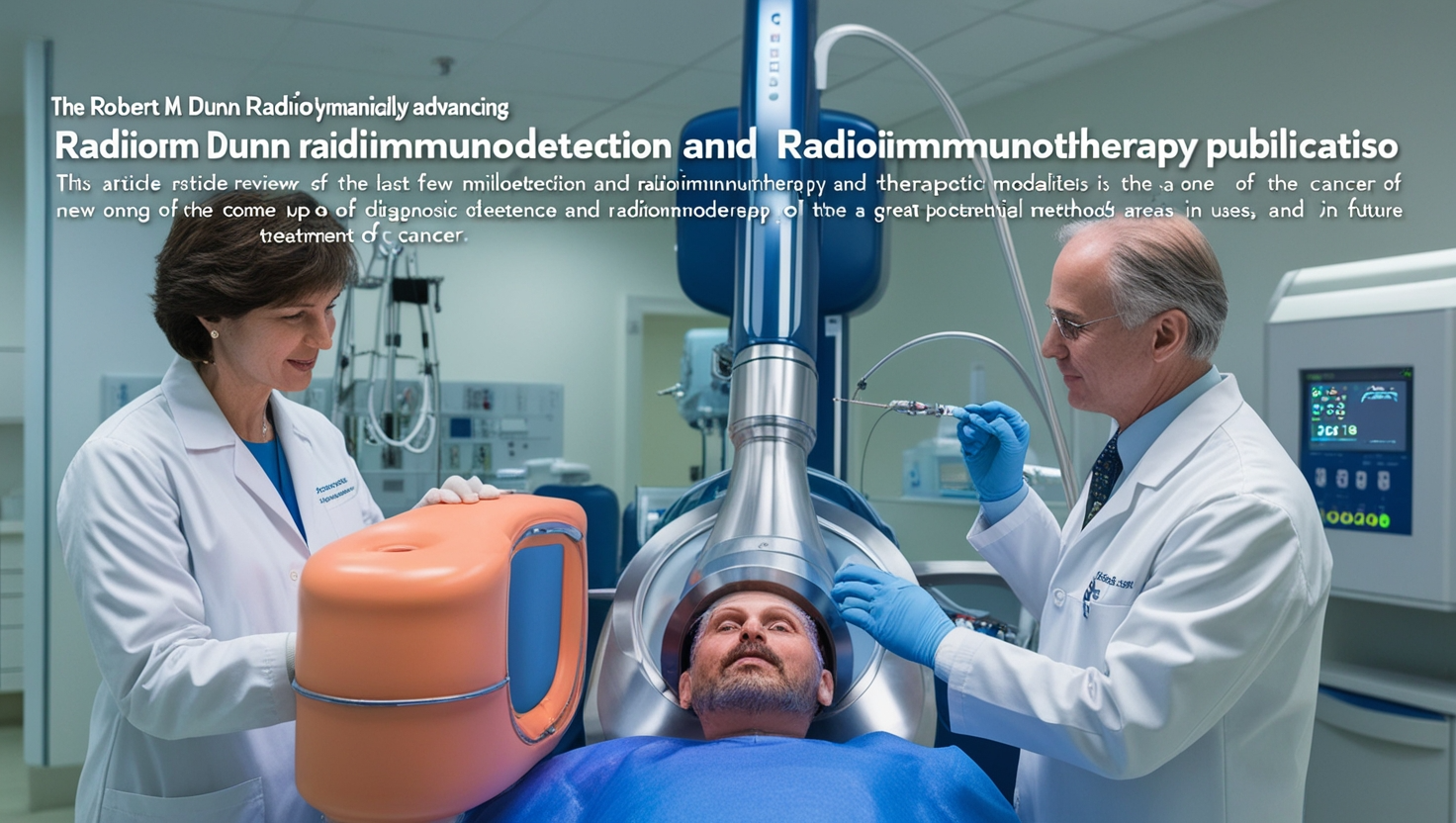
Introduction:
The medical science field is constantly and very dynamically advancing, and one of the huge milestones of the last few years has been the coming up of new diagnostic and therapeutic modalities in cancer. Thus, Robert M Dunn radioimmunodetection and radioimmunotherapy publicatiso is one of the most effective methods launched among many that has a great potential in the future treatment of cancer. This article reviews the technical advances, areas of uses, and future of Robert M Dunn radioimmunodetection and radioimmunotherapy publicatiso .
Looking at the abbreviation above, it isn’t easy to define what Robert M Dunn Radioimmunodetection and Radioimmunotherapy Publicatiso mean:
Robert M Dunn radioimmunodetection and radioimmunotherapy publicatiso describes a method that works to detect and treat cancer using radioisotope antibodies. The process uses the characteristics of antibodies that can home in on cancer cells and radioisotopes to deliver targeted radiation to those cells. This progressive technique was brought close to the theoretical apex of innovation by theoretical scientist Robert M Dunn, who was key in fashioning immunology and oncology.
The primary concept of this technique is that some radioisotopes, which are linked to an antibody, can only target tumor cells. Once attached, these radioisotopes release radiation and kill the targeted cells while sparing the normal tissues around them. This targeted approach is a major advancement from normal cancer treatments such as chemotherapy and radiotherapy, which impact normal tissues.
Robert M Dunn radioimmunodetection and radioimmunotherapy publicatiso has already passed the stages of being a potential hope for the improvement of the conditions of cancer patients and the help in such treatments; it just provides a possibility of targeting the particular cancer cells. Thus, this method based on antibodies and radiation is gaining the role of both diagnostics and treatment, which is especially important for cancer diseases that are difficult to diagnose in the early stages and treat effectively.
Publicatiso The Development of Robert M Dunn Radioimmunodetection and Radioimmunotherapy
It is important to note that the concept of tagging radioisotopes with antibodies aimed at cancer did not start with Robert M. Dunn. However, his vision and innovative approach contributed to the refinement of his radioimmunodetection and radioimmunotherapy publications. In the 1980s and 1990s, his research provided the basis for what would turn out to be a groundbreaking discovery in oncology.
Therefore, Robert M Dunn’s primary impact was to develop techniques for generating exquisite reagents – antibodies – that could selectively engage tumors. He showed that by linking these antibodies witradioisotopeses, it was possible to design a system that could both identify the tumors in the body and treat them by administering radiation that was likely to arrest or even eliminate the tumor. His work laid the ground for radioimmunodetection and radioimmunotherapy as a realistic mode of treatment, which has attracted the interest of researchers, clinicians, and pharmaceutical industries.
The future of this technique has been the publication of Robert M Dunn:
radioimmunodetection and radioimmunotherapy, and more studies are being conducted to fine-tune the process. Currently, an effort is being made to develop new approaches to coding the antibodies to be used more effectively and safely to treat various types of cancer.
Robert M Dunn Applications of Radioimmunodetection and Radioimmunotherapy Publicatiso:
The most crucial benefit of Robert M Dunn radioimmunodetection and radioimmunotherapy publicatiso is that it can identify the malignant neoplasm in their early state. In traditional diagnostic measures such as X-rays, CT, and MRI scans, noticeable lumps are necessary; this gives the cancer the time it needs to spread. However, science doctors can identify even tiny clusters of cancer cells by using antibodies tagged on radioisotopes, greatly enhancing treatment possibilities.
This method is most useful when diagnosing some types of neoplasms that cannot be identified using conventional imaging methods: lymphomas, leukemias, and certain types of solid cancers. Robert M Dunn radioimmunodetection means that physicians can track tumor growth and evaluate the results of cancer treatments. The technique can also be used to diagnose metastases, diseases, or tumors that occur at other sites apart from the original cancer site.
In the realm of therapy, Robert M Dunn’s radioimmunotherapy publication has emerged as the new hope in curing cancers that are otherwise impossible to treat. Precise radiation to cancer cells makes this therapy less damaging than other conventional radiation therapy. For instance, patients who undergo radioimmunotherapy suffer a lower rate of damage to healthy tissues and the chances of second cancers.
In addition, radioimmunotherapy can be integrated with other types of cancer treatment, such as chemotherapy or immunotherapy, to improve their outcomes. Such an approach can be more effective and less intrusive than a pure drug-based approach and can also be more tailored to the individual patient.
Furthermore, the applications of Robert M Dunn radioimmunodetection and radioimmunotherapy publicatiso can enhance the quality of receival of cancer care. The understanding that everyone is different genetically means that doctors can accurately determine how to advance in a given patient’s specific type of cancer treatment. When used with recent improvements in genetics and evaluations for molecular medicine, the technique promises to provide operationally better cures for cancer.
Issues in the Appropriate Utilization of Robert M Dunn Radioimmunodetection and Radioimmunotherapy Publicatiso:
Although Robert M Dunn radioimmunodetection and radioimmunotherapy publicatiso has vast possibilities for cancer treatment, several issues should be solved to adapt this technique for broad practice among oncologists. Among the challenges is the cost of production of radioisotopes and antibodies used to diagnose diseases. Mainly, they are costly to manufacture, and this slows the accessibility of these remedies, especially in developing states or for patients who cannot afford premium health insurance.
One challenge that needs to be considered is the use of the right radioisotopes. Several radioisotopes operate at different levels, intensity, and time or half-life, and choosing one for use in a specific kind of cancer is a specific decision. If the wrong radioisotopes are selected, the absorption could be slow, or the radiation damage done to the healthy tissues may be high, resulting in side effects.
Furthermore, although Robert M Dunn radioimmunodetection and radioimmunotherapy publicatiso has been earned efficacious results in clinical trials, this technology is not practiced for all the types of cancer. Further studies are required to optimize the method, develop higher performance, and apply it to other forms of cancer. The procedure for approving new therapies and treatments is also time-consuming which slows the use of pioneering techniques such as Robert M Dunn radioimmunodetection and radioimmunotherapy publicatiso.
Robert M Dunn Radioimmunodetection and Radioimmunotherapy: The Future Publicatios
Nevertheless, it shines brightly for Robert M Dunn radioimmunodetection and radioimmunotherapy publicatiso. Practitioners are always trying to enhance this method’s effectiveness and usability in daily life. This field has the potential to be developed as a method that utilizes nanotechnology to improve the targeting of radioisotopes in cancer cells. Scientists believe that the generated nanoparticles can improve the precision of radioimmunotherapy by effectively targeting cancerous tissues.
A promising new direction in radioimmunotherapy implementation can be combined with other forms of treatment, such as gene therapy and targeted therapy. If treatments can be specifically developed to target particular genetic markers in each patient then even the Robert M Dunn radioimmunodetection and radioimmunotherapy publicatiso may be improved.
Besides, enhancements in the technological aspect of radioimmunodetection and radioimmunotherapy are keenly observed by calling authorities, such as the U.S. Food and Drug Administration. As more protective and effective data are added each year, it can only be assumed that this technique’s treatment will be routinely and systematically integrated into cancer management protocols over the next few years.
Conclusion:
Consequently, Robert M Dunn radioimmunodetection and radioimmunotherapy publicatiso is the new advance in the battle against cancer. This original approach outlined by Robert M Dunn may be the key to radically different cancer detection and treatment, giving millions of patients a chance. Despite the current concerns regarding its cost, availability, and treatment enhancements that are needed for improvements, the future of radioimmunodetection and radioimmunotherapy appears promising. As research advances and device technology evolves, it will become even better. The more one learns about cancer, the greater the realization that where the future of oncology is headed is with a man named Robert M Dunn.
With the use of Robert M Dunn radioimmunodetection and radioimmunotherapy publicatiso to get a better picture of cancer today get one step closer to early detection of cancer and better treatment remedy to increase chances of survival and enhance the quality of life of cancer patients today.



